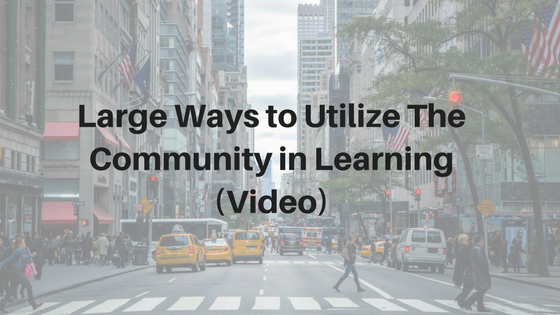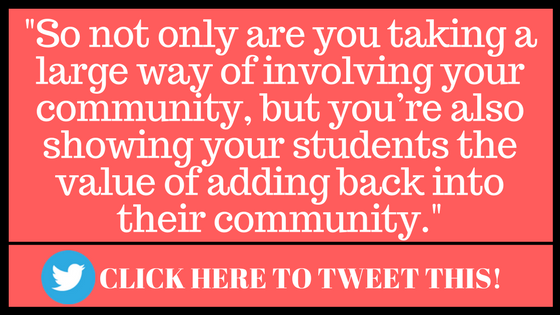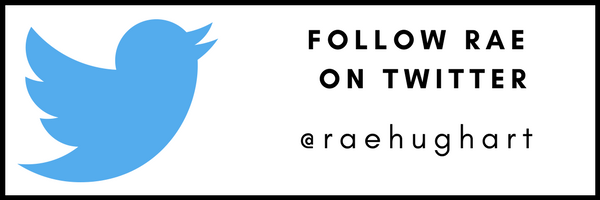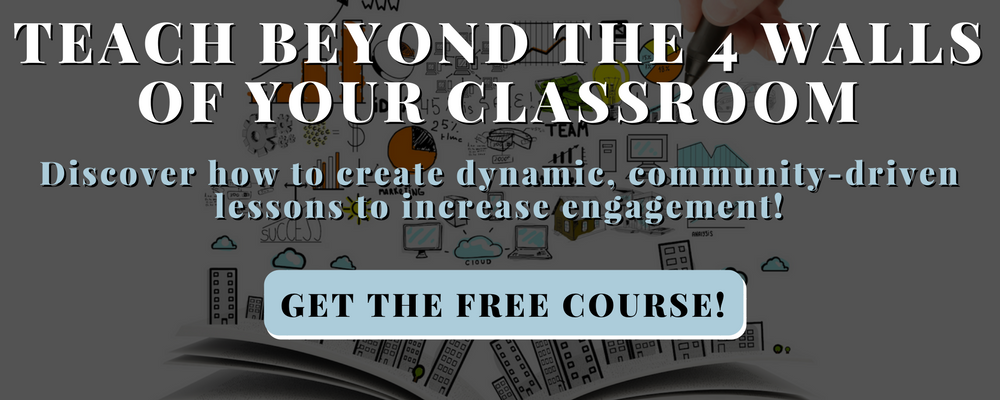How can you incorporate your community in learning?
-Video Transcript Below-
VIDEO TRANSCRIPT
Hey guys! It’s Rae and we get to talk today about large ways to involve your community in your learning. This is like my jam! I love talking to teachers about how they can start relying on experts to really lead strong lessons in their classroom.
So I’ve done a few blog posts before, and in my past blog and videos, I touched on how you can incorporate your community, and I throw in these little snippets of small ways to do it. I have to tell you though, one of my biggest frustrations is having teachers design one great activity for one great lesson that one time during the year, and then that’s it, and we have to find a way to make everyday that great and dynamic, or at least once a week. We gotta find a manageable way to really not only give our students that one time and check that box, but engage them every single day.
The problem with this is teachers are always like oh I don’t know, I dont have the time for that. Ugh, I feel you. I don’t have time for that either, so we have to find a system, kinda like full proof system that really does this for us, so we know as they have these great learning opportunities, that they work every single time.
So, let’s go back. Large Ways to Involve Your Community is my solution to this problem. I think that by involving your community, you are able to provide this seamless transition between content as you go throughout the year. Now, what’s the best way to do this, the Teach Further model. Teach Further requires the teachers to design rigorous curriculum with really strong creativity, with then an enormous connections component.
The connections are split up into two ways.
One is by connecting it to your students future career paths, and the second is by connecting it to your students present community. So by taking that learning and really showing them where when they step outside of the classroom, they go see that action. There’s a few large ways to do this.
The largest in my opinion, I’m sure, is to do every unit as a Teacher Further unit. Every single unit comprised of those three pillars, and allows you to bring in the community every single time. Now I do this in my classroom every single subject I teach, every single unit I teach, and every single student that I see all year, participate in things called internships. Mock internships, and each mock internship is sponsored by a local community. I live in a relatively small town in central Illinois. It’s small for me. I originally grew up in the north suburbs of Chicago, so this is what I consider a small town, it does have State Farm headquarters, and a few other larger corporations.
There are also two or three universities here, but I have to tell you, for me it seems a little small. So when I was going through and designing these units, what better way to show my students the purpose behind learning, than actually allow them to walk outside and go see it in action.
I currently teach sixth-grade math and writing and so I have a lot teachers that are like ugh I don’t know how are they going to use that. Well that’s the whole point. Find the purpose, and make it the focus of every single day. Then the easiest way to drive purpose is to use your community.
When I originally started out, I was trying to bring in real-world situations for my students by creating them out of thin air, I would look at word problems and I would create an atmosphere where students were able to be immersed into their learning, the problem was that I was realizing, was that I’m not an expert in every field that they might go into. I’m just not. I’m a teacher, and while I can teach content fairly well, I also recognize that I’ve never been an architect, I don’t even know what it takes to be an architect, and so I think that teachers stop there, and say well I have a general overview of architecture, I can give them a general overview and that’s all I can do, and really the best way to involve your community is acknowledge that you’re not an expert in everything and bring in those experts that already exist in your area.
I worked with the teacher one time, a little south of me, and she was telling me about how she didn’t have much around her. She was in even smaller town, and she couldn’t find a way to implement, I think her example was archaeology, and she was trying to implement that piece. Really what you need to acknowledge is you need to go out and find experts even, if they’re a little farther than you would normally like.
While you can find an expert in the local small business that might be center of the town, or reach out to the closest University, that might be a little further away, and reach out to them and ask them to be involved. Those are huge ways to involve your community, allow your students to be immersed in those internships, in those professions to drive the purpose then and your daily learning I think that if everybody taught this way, could you imagine how education would change? You would have stakeholders not only within the classroom, not only in the homes in which our students learns, but also in our professionals, in our community, that are starting to invest in your student’s success, because they are taking part in the day to day, in and out tasks of that profession.
So not only are you taking a large way of involving your community, but you’re also showing your students the value of adding back into their community. Interesting.





